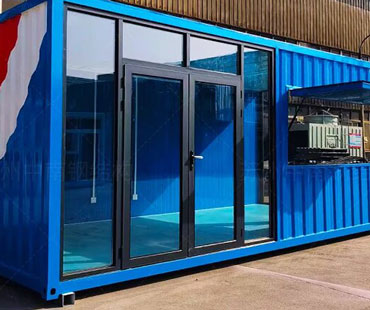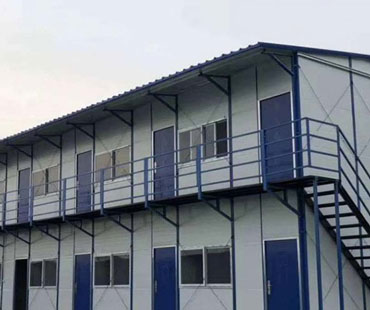In recent decades, China has undergone a remarkable transformation, emerging as a global economic powerhouse. A crucial element of this transformation is the development of its container transportation system, which has played an essential role in facilitating trade and economic growth. The coordinated development of the entire container transportation chain—ranging from ports to urban logistics—has become increasingly vital as the country seeks to optimize its supply chain efficiency, support urbanization, and enhance trade competitiveness. This article explores the interconnectedness of ports and cities in China’s container transportation system and highlights the strategies aimed at achieving a seamless and efficient logistics network.
Ports serve as the critical nodes in the container transportation chain, acting as gateways for international trade. China boasts some of the world’s busiest ports, including Shanghai, Ningbo, and Shenzhen, which handle millions of TEUs (twenty-foot equivalent units) each year. The significance of these ports extends beyond mere cargo handling; they are integral to China’s broader economic strategy.
These ports have invested significantly in advanced infrastructure, including deep-water berths, automated container handling systems, and state-of-the-art customs facilities. Such investments not only enhance the capacity and efficiency of cargo processing but also reduce turnaround times, ensuring that goods flow smoothly from ships to land transportation systems. However, the development of ports is just one part of the equation; the link between these ports and the cities they serve is equally important.
As China’s urban population continues to grow, the demand for efficient logistics solutions has surged. Urban logistics encompasses the processes that facilitate the movement of goods from ports to urban centers, including distribution centers, warehouses, and last-mile delivery services. The coordination between ports and urban logistics systems is crucial for meeting the demands of modern consumers and businesses.
The challenge lies in ensuring that the flow of goods from ports to cities is optimized. This requires a multi-modal transportation network that integrates maritime, rail, and road transport. Railways, in particular, are increasingly recognized for their efficiency in transporting containers overland, providing a sustainable alternative to road transport that can help alleviate traffic congestion in urban areas.

To achieve a seamless connection between ports and cities, China has implemented several coordinated development strategies. One such strategy is the establishment of “port-city integration” initiatives. These initiatives aim to create synergies between port operations and urban planning, ensuring that the development of port facilities aligns with the growth of surrounding urban areas.
1.Infrastructure Development: Investment in infrastructure is fundamental to facilitating coordinated development. China has been expanding and modernizing its road and rail networks to enhance connectivity between ports and cities. High-speed rail links and dedicated freight corridors are examples of infrastructure improvements that allow for rapid and efficient movement of containers inland.
2.Smart Logistics Systems: The integration of technology into logistics operations is another key component. Smart logistics systems that utilize big data, the Internet of Things (IoT), and artificial intelligence (AI) can optimize supply chain management, predict demand patterns, and enhance delivery efficiency. For instance, using real-time data to manage inventory and track shipments can significantly reduce delays and improve service quality.
3.Sustainability Initiatives: As environmental concerns grow, China is actively promoting sustainable logistics practices. Green logistics initiatives focus on reducing carbon emissions associated with transportation. This includes encouraging the use of electric vehicles for last-mile delivery and implementing eco-friendly practices in warehouse management.
4.Policy Support and Regulations: The Chinese government plays a critical role in facilitating coordinated development through supportive policies and regulations. By creating a favorable regulatory environment that encourages investment in logistics infrastructure and technology, the government can foster innovation and improve the overall efficiency of the container transportation chain.
Several cities in China exemplify successful port-city integration. For example, Shanghai has implemented a comprehensive logistics network that connects the Port of Shanghai to its urban center. The city has developed dedicated freight corridors and invested in intermodal facilities that allow for seamless transitions between different modes of transport. This integration has not only improved logistics efficiency but also contributed to the city’s economic growth.
Similarly, Shenzhen has leveraged its proximity to the Port of Yantian to establish a thriving logistics ecosystem. The city has invested in advanced logistics technology and developed smart warehouses that facilitate efficient inventory management and distribution. By fostering collaboration between port authorities, logistics companies, and urban planners, Shenzhen has created a model for coordinated development.
The coordinated development of the entire container transportation chain from ports to cities is crucial for enhancing China’s trade efficiency and supporting its economic growth. By investing in infrastructure, leveraging technology, promoting sustainability, and implementing supportive policies, China can optimize its logistics network and create a seamless connection between its ports and urban centers.
As the global economy continues to evolve, the ability to efficiently move goods from ports to cities will remain a vital component of China’s competitive advantage. This integrated approach not only benefits the economy butalso enhances the quality of life for urban residents by ensuring that goods are delivered swiftly and reliably.


